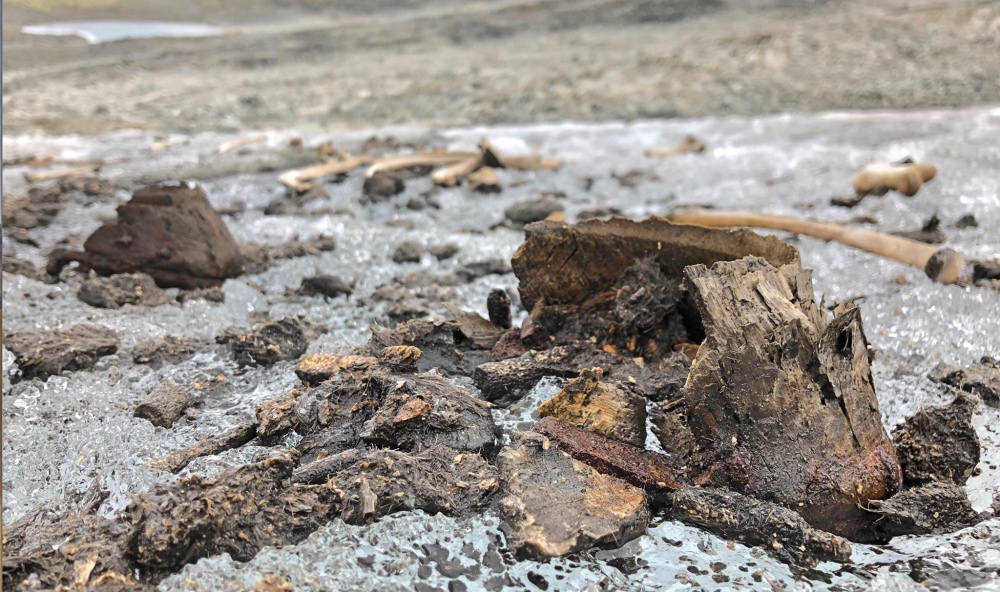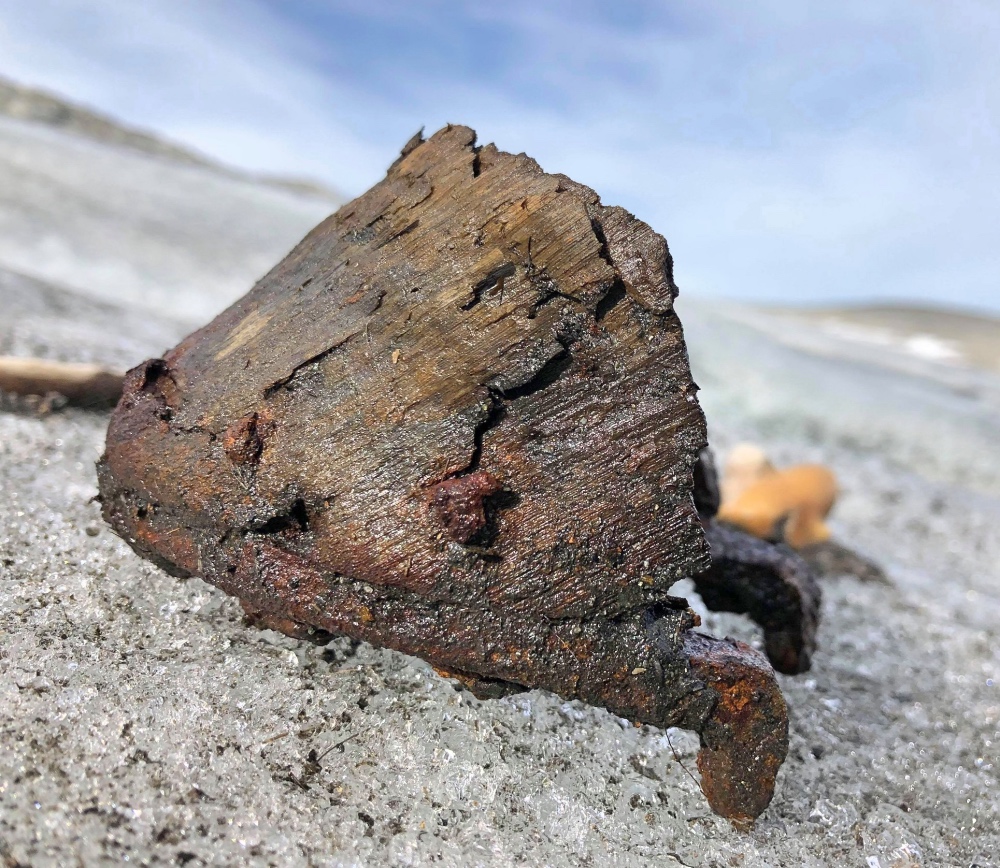As the glacial ice in the high mountains of Norway continues to recede, treasures from a bygone era emerge and archaeologists race to collect the artifacts for preservation — including a recently discovered shod horse’s hoof and an equine snowshoe.
Researchers, who document their finds on the Secrets of the Ice website and Facebook account, announced Aug. 15, 2019, the discovery of a horse’s snowshoe at nearly 2,000 meters on the upper edge of the Lendbreen ice patch in Oppland County, Norway.
“It measures 40 [centimeters] x 30 cm,” according to the archaeologists. “It is similar to know horse snowshoes from the 19th century.”
Although the snowshoe is similar to those used in the 1800s, this artifact is believed to be considerably older.
“Based on other finds here, it is probably from the viking age or the medieval period,” say the archaeologists. “As archaeologists, we are used to our finds looking old, but these finds have not aged as the ice works like a time machine, bringing these artifacts to our time in a pristine state. There is a thin layer of new snow covering the old ice. You can see the old ice beneath the object where the new snow has melted around the object.
“It was probably lost in deep snow during the crossing of the ice patch, and it has likely not been out of the ice since then since it was found on the old ice and in excellent preservation. Most finds tend to have been in and out of the ice a couple of times, but this looks like a possible exception to the rule.”
The snowshoe, which traditionally were made with a ring of juniper. as well as withe that were made from the twisted root shoots of birch. The shoe would have been attached to the foot with a fastener made from withe — a tough, flexible root shoot from a birch tree. The withe was not found with the snowshoe. Researchers will study it further to determine the materials that were used.

in the receding Lendbreen ice patch in Norway.

the ice patch. The hoof is believed to be between 500 and 700 years old.
Two days after the snowshoe find announcement, archaeologists released photos of a shod hoof of what’s believed to be a pack horse. Based on the horseshoe’s shape, which features calkins, it is believed that artifact is between 500 and 700 years old. The researchers reference the book “The Medieval Horse and Its Equipment, c.1150-c. 1450,” which was edited by John Clark and published by The Boydell Press. The Museum of London holds the 1995 and 2004 copyrights.
“We believe the horseshoes are late medieval, which would fit well with other finds here,” they say. “Radiocarbon [testing] will give us the final answer. We already have a long series of radiocarbon dates from this site.”
Although it’s not unusual for pack horses to be lost in a crevasse, the Lendbreen ice patch does not have a crevasse.
“We can rule out falling into a crevasse as a cause of death,” says Lars Pilo, an Oppland County Council researcher. “The trip over the pass was quite short, so lack of fodder is also out. More likely, the packhorses suffered a fall and a broken leg or they died from exhaustion.”
A number of equine-related finds have been discovered in the Lendbreen ice patch including other medieval horseshoes, nails, manure and the bones from two packhorses. One set is from the 15th century, while the other is about 1,500 years old.









Post a comment
Report Abusive Comment